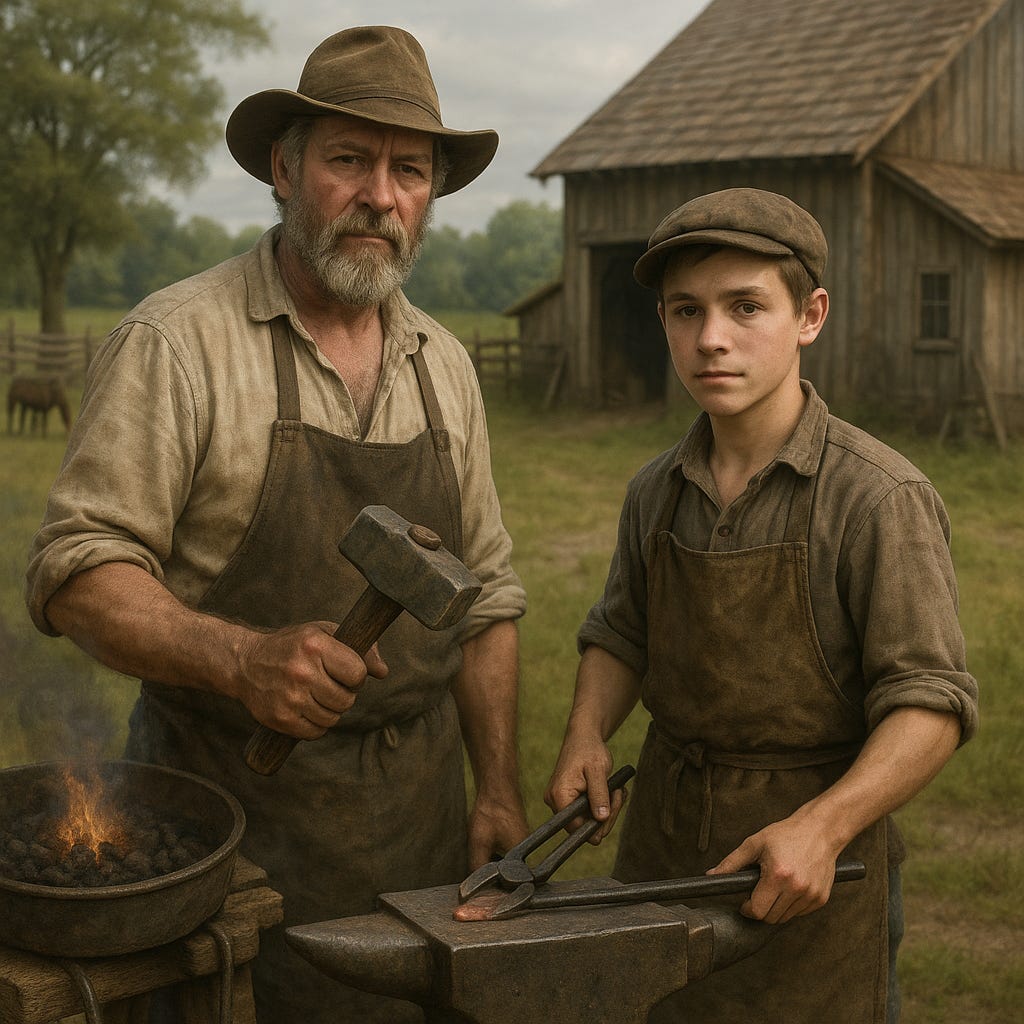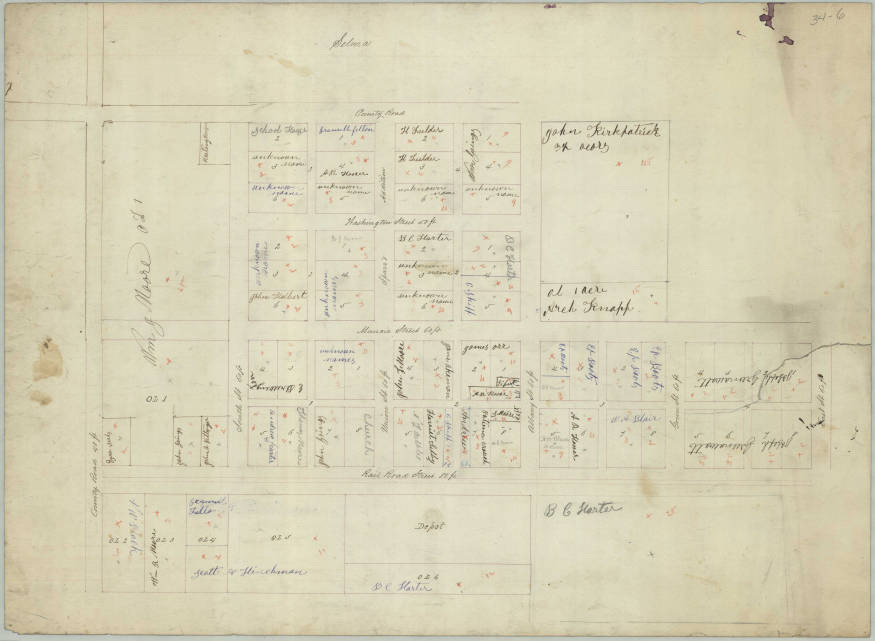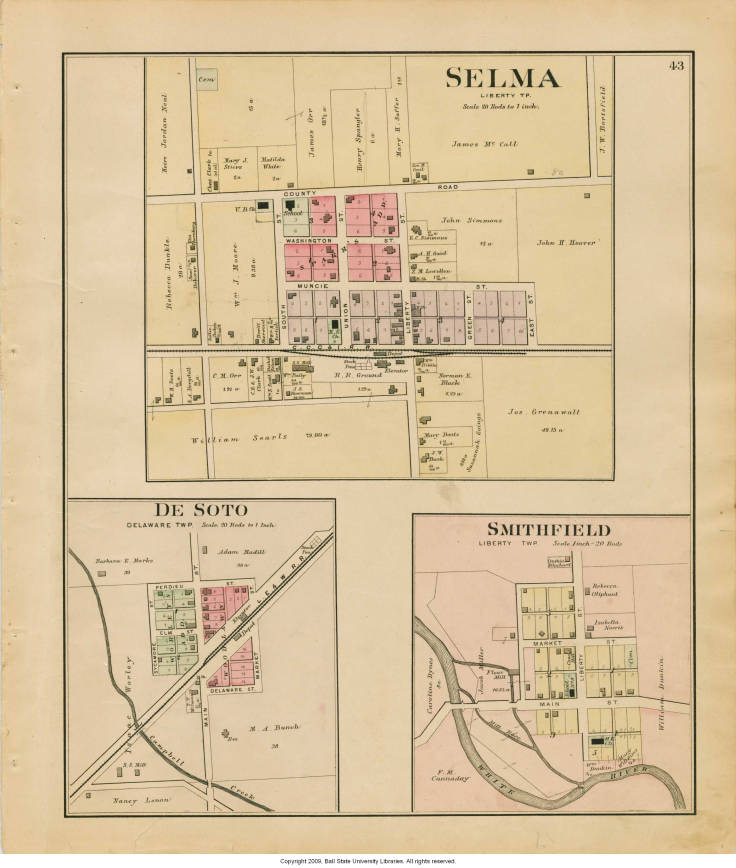After the deaths of John and Nancy Moore, their elder children worked together to take care of their younger siblings. William Jackson Moore, my 3rd great-grandfather, took in one of his brothers.1 According to biographical information provided by Elaine Bennett, Charles “found a home” with William and his family.2
As the eldest son, William inherited substantial property from his father’s estate. Additionally, he purchased other parcels of land in the area. He continued to purchase land throughout his life.
By 1850, William’s farm holdings were extensive. The family had moved a few miles from Smithfield to Selma. The 1850 Census indicated that William owned land worth $5,000 (which would calculate to over $200,000 today).3 In 1852, William expanded his farming business to include a sawmill. As more settlers came to the area, lumber was a valuable commodity.
During this time, William began to branch out into business. In about 1854, he entered a partnership in a grain and general goods business with his brother-in-law, James E. Wilcoxon. That partnership lasted three or four years until Wilcoxon sold his interest back to William.4
The 1860 Census shows that William’s farming endeavor was continuing to grow, as was his family. Three more children had joined the Moore clan in the past ten years. One interesting note was that William and his 15-year-old son, William Roby were both listed as blacksmiths.5 At that time, they still lived some distance from town, so their blacksmithing was probably limited to their farm and possibly a few neighbors.

Community service was a family tradition dating back to when Rev. John Moore had helped to organize Newtown, New York, in the 1600s. William continued that tradition in 1864 when he was elected the first Trustee of Liberty Township in Delaware County. He served two one-year terms in that capacity 6
By 1870, William and Sarah were living near Selma in Liberty Township. William continued his general goods business, opening a mercantile in Selma’s main business district. He still had significant farmland, but increasingly, he was moving his focus to the growing town of Selma.

The large piece of land belonging to William J. Moore on the left of each map appears to have never been divided or developed. Current maps and satellite images show a park with three baseball diamonds there. The map above is faded and difficult to read, but the location of William’s mercantile is shown on Albany Street which was the business district at that time.

In 1885, William and Sarah celebrated their 50th wedding anniversary. A newspaper account of the festivities told a story of a grand celebration. Several of their living siblings were able to attend, as were all of their children and all fourteen of their grandchildren. My great-grandfather would have been 24 at that time. The article concluded with the following description of William and Sarah:
William J. Moore is one of the landmarks of Liberty township and is a man of high intelligence. His counsel is often asked in matters of deep interest; he has filled many places of honor and trust and been found competent and worthy. The interest he takes in matters of state, church, education, and temperance makes him a citizen of high value. His industry made him successful as a farmer and his genius made him master of four mechanical pursuits. Such men we love and honor. His most estimable wife is a Christian woman of rare and noble traits of character and capable and worthy to train a noble family.7
Sarah Wilcoxon Moore died on 12 June 1893 at the family home. Her obituary mentioned that “During their married life of 57 years, death had never before entered the family.” She was buried at Moore’s graveyard (now called Parker Moore Cemetery) in Muncie.8
William Jackson Moore followed soon after Sarah. He died at home of cancer on 1 September 1893. He is buried beside Sarah.9
1840 U.S. Census, Delaware County, Indiana, no township, page 262; line 4, for William Moore household; imaged, “United States Census, 1840,” Ancestry (https://www.ancestry.com/imageviewer/collections/8057/images/4411338_00537?pld=1999575 : accessed 28 June 2025).
Elaine C. Bennett, Local History Cards for the Moore Family, Elaine Bennett Delaware County Family Name Index Cards Collection, Ball State University. University Libraries. Archives and Special Collections, (https://dmr.bsu.edu/digital/collection/LclHstCrds/id/26818/rec/10): accessed 30 June 2025.
Elaine Bennett was a native of Delaware County, Indiana who attended Ball State University in Muncie, Indiana and American University in Washington D.C. She was an archivist at the National Archives and later taught English and linguistics at the University of Maryland.
1850 U.S. Census, Perry Township, Delaware County, Indiana, page 305b (stamped), line 20, for William J. Moore household; imaged, “1850 United States Federal Census,” Ancestry (https://www.ancestry.com/search/collections/8054/records/1773059?tid=203657777&pid=312665434053&ssrc=pt : accessed 25 June 2025).
A Portrait and Biographical Record of Delaware and Randolph Counties, Ind. (Chicago: A. W. Bowen & Co., 1894) 491.
1860 U.S. Census, Selma, Liberty Township, Delaware County, Indiana, page 73 (penned), line 3, for William J. Moore household; imaged, “1860 United States Federal Census,” Ancestry (https://www.ancestry.com/search/collections/7667/records/105911?tid=203657777&pid=312665434053&ssrc=pt : accessed 25 June 2025).
Thomas B. Helm, History of Delaware County, Indiana: With Illustrations and Biographical Sketches of some of its Prominent Men and Pioneers (Chicago: Kingman Brothers, 1881) 129.
“Golden Wedding Celebration,” The Muncie [Indiana] Morning News, 18 August 1885, page 1, col. 3, imaged, Newspapers.com (https://www.newspapers.com/article/the-muncie-morning-news-golden-wedding-c/175497906/ : accessed 25 June 2025).
“Death of Mrs. Moore,” The Muncie [Indiana] Morning News, 13 January 1893, page 1, column 4, imaged, Newspapers.com (https://www.newspapers.com/image/548798012/ :accessed 25 June 1893).
“Obituary,” Muncie [Indiana] Evening Press, 5 September 1893, page 8, column 2, imaged, Newspapers.com (https://www.newspapers.com/image/576703559/?clipping_id=175498513 : accessed 25 June 1893).





what a lovely tribute to your g-great grandfather.
Selma is a suburb of Muncie at this point. When my family lived there, it was about 3 miles out of town--a long trip back then.